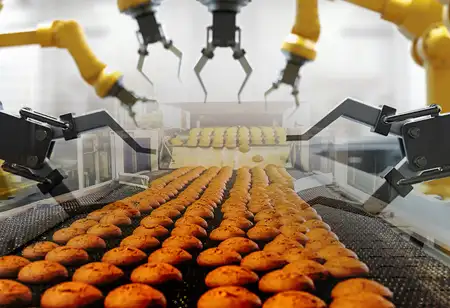Thank you for Subscribing to Food Business Review Weekly Brief
- Home
- Topics
- Alternative Proteins and Plant Based Food
- Beer and Wine
- Canned Beverages
- Coffee And Tea
- Food and Beverage Consulting
- Food and Beverage Financial Service
- Food And Beverages Marketing
- Food Distributors
- Food Ingredients
- Food Sustainability
- Plant Based Food and Beverages
- Seafood Suppliers
- Supplement Manufacturing
- Wine Investment
- News
- Vendor Viewpoint
- CXO Insights
- Conferences
- Newsletter
- CXO Awards
-
Ensuring Safe Food Packaging for a Healthy Future
Food packaging plays an important role in the quality of the product.

By
Food Business Review | Thursday, December 05, 2024
Stay ahead of the industry with exclusive feature stories on the top companies, expert insights and the latest news delivered straight to your inbox. Subscribe today.

Physical contamination, chemical contamination, and microbiological contamination are some of the crucial contamination risks in food packaging.
FREMONT, CA: Food packaging plays an important role in the quality of the product, not just the inside. Food safety measures can be made or broken by it. By identifying and eliminating threats on the outside, the product inside can be protected. The three common contamination risks in food packaging have been highlighted in this article. All steps of the food chain are affected by these threats, including production, processing, packaging, and transportation.
Physical contamination: Millions of food products are recalled every year due to foreign contaminants discovered by consumers. When actual objects contaminate food, it is called physical contamination. A few of the most common physical contaminants are glass, wood, stones, metal, jewelry, filth, insulation, bone, plastic, personal effects, bullets, and needles. News channels often cover strange and uncommon objects found in food products. The food industry takes many precautions to ensure that any end product that reaches consumers is free from physical contaminants. The number of physical contaminants in food packaging is significantly reduced thanks to improved methods for preventing and identifying these foreign objects.
Microbiological contamination: Food packaging is also at risk from microbiological contamination. Microbiological contamination occurs when microbes such as bacteria, yeast, mold, fungi, and viruses are introduced unintentionally. Without proper precautions, contamination can occur at any stage of the production process. The right measures should always be taken when dealing with pests, as they can have disastrous effects on the business and product. Pests caused by stored product insects (SPIs), weeds, and plant diseases caused by fungi are examples of microbiological contamination.
Chemical contamination: Chemocontamination occurs when chemicals are present where they shouldn't be or when their amount exceeds what's considered safe. A high concentration of chemicals in edible products can pose serious health risks as a result of packaging contamination.
Each stage of food production, packaging, and preparation has the potential to introduce chemical contaminants to the food. As a result, chemical contamination poses many risks. Direct contact of food with packaging materials can result in chemical contamination by migrating some harmful substances into food. Food contamination can also occur as a result of the use of unapproved or erroneous additives.
Chemocontamination occurs when chemicals are present where they shouldn't be or when their amount exceeds what's considered safe. A high concentration of chemicals in edible products can pose serious health risks as a result of packaging contamination.
Each stage of food production, packaging, and preparation has the potential to introduce chemical contaminants to the food. As a result, chemical contamination poses many risks. Direct contact of food with packaging materials can result in chemical contamination by migrating some harmful substances into food. Food contamination can also occur as a result of the use of unapproved or erroneous additives.






